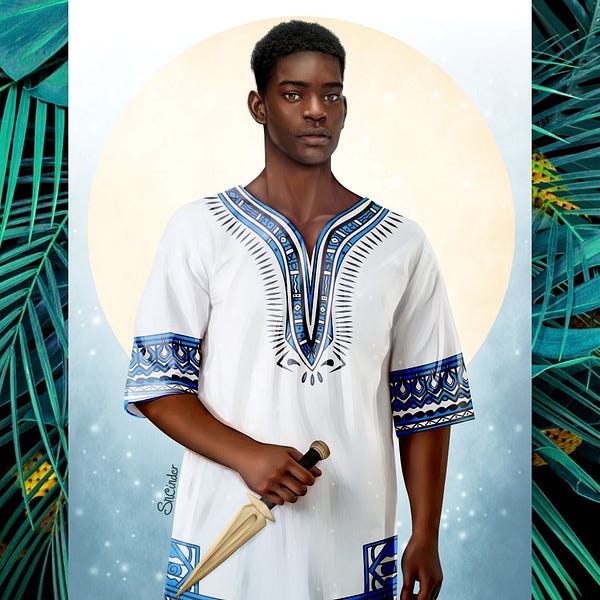in defense of the gentle BIPOC character
Talking about gentle Black boys in books and the importance of showcasing that aspect of masculinity.
The wall by the McDonald’s on U St. Washington, D.C., tastes and feels just like you imagine it would: grainy and weirdly moist.
I know that because a few years ago when I was walking out of dinner, my companion got into an argument with a random man on the street that turned physical. I, apparently foolishly, decided to break them apart. That’s when the police stopped by and decided that the person defusing the fight was the one who needed to be detained and held against that wall.
Was it the fact that it was two white guys fighting and I’m brown? Was it the fact that I was taller than them both? Who can say for sure? All I know is that while two other men were yelling and acting violently, I was the only one with an elbow on my neck being asked to explain myself.
This small instance pales in comparison to the treatment of other BIPOC in America — especially Black men. (This has to do with stories, I swear!) Let’s start with a stat, because everyone loves math: A 2020 Gallup poll found that 18% of Black adults “very often” experience people acting as if they are afraid of them — with Black men experiencing this at twice the rate of Black women.
I bring this up because, as you all know, we’re still dragging on racist practices from the past, but there are always steps we can take to be better. One of them is supporting Black authors. So let’s talk about Black men in novels.
In the time since I last sent this newsletter, I read a few books and spoke with New York Times bestselling (debut) author Ayana Gray. (You can read that convo here.) Something that didn’t make it to the article was a conversation we had about Black male characters in her book. (I won’t do direct quotes, because we spoke for a specific article and it would be unfair to quote her here. So please just consider this a missive from my old conversations.)
In Gray’s novel “Beasts of Prey” we’re introduced to Ekon, a bookish and awkward young Black man, who relies on his intellect rather than physicality to problem-solve. And of course, I saw myself in Ekon.
He liked books, generally speaking, because they could be trusted to be consistent. A book could be read a thousand different times, a thousand different ways, but the words on the page would never change. Unlike people, books couldn’t be disappointed in you. They couldn’t abandon you; they couldn’t fail you.
When we spoke about Ekon, Gray talked about gentle Black boys and the importance to showcase those aspects of masculinity — especially at a time where Black men are immediately judged as aggressive.


At the risk of stating the obvious, when all the representations of BIPOC men in media have traditionally been of a certain type, we carry that with us through life.
“Cannibals, criminals, fiendish fathers, hacks, Uranians, porn stars, errant clergymen, yobs, New Men and ‘mates’” were the models of masculinity that informed the book “Signs of Masculinity: Men in Literature 1700 to the Present.”
No gentle bois there.
Of course, Ekon is not the only Black man in BOP, and there are Black male characters that do evil things and are aggressive. But because all characters in BOP are Black, they are allowed to have nuance and not be beholden as representation for an entire group. Non-Black readers like myself are forced to reckon with a fact that we all know consciously but rarely apply unconsciously: no group is a monolith.
Making the protagonist the gentle one provides readers a closeness to a different type of Black men than what mainstream media presents.
The same could be said for Danso in Suyi Davies Okungbowa’s “Son of the Storm” or Lawrence, Nathan, Daniel, etc., from Issa Rae’s “Insecure.”
Maybe if more gentle BIPOC male characters had been a part of what we consume, I wouldn’t know how disgustingly moist that wall on U St. really was.
Some recs
📰 USA TODAY staff's 2021 favorite first-time reads: Add these 14 books to your to-be-read pile (I contributed to this so might as well plug it.)
🧜🏿♀️ “Skin of the Sea” by Natasha Bowen (I’m obsessed)
📚 “On Writing and Worldbuilding: Volume II” by Timothy Hickson (Resource for genre writers)

